I don’t know what anybody’s five-year business plan looks like in film or animation. At the end of the day, we’re still just a bunch of students who like sitting on the grass and showing each other pictures and drawings that we have, what our influences are, what we want to do in the future. That’s what keeps us going and drives us forwards.
—Nora TwomeyThe Secret of Cels: Nora Twomey on Cartoon Saloon’s present and indie animation’s future
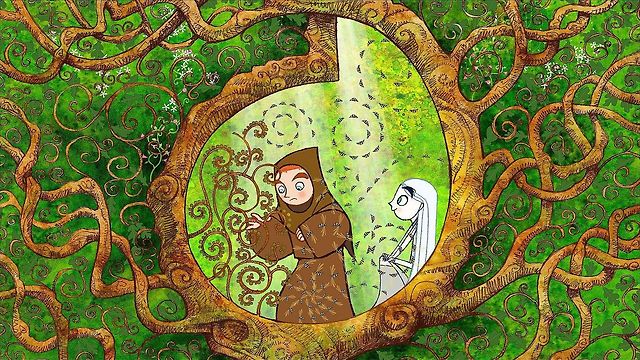
Fresh from serving as jury president at this year’s Niigata International Animation Film Festival, animator Nora Twomey talks to Alicia Haddick about directing The Breadwinner and The Secret of Kells, co-founding Cartoon Saloon and the uncertain future of indie animation.
It was Cartoon Saloon co-founder Nora Twomey’s first time in Japan, she explains as we meet in a Tokyo hotel shortly following her stint as jury president of the recent Niigata International Animation Film Festival. An enjoyable experience, for sure, but hectic. Alongside judging films in competition from around the world, Twomey found time between her duties to host a talk about her career, nurture the next generation at the fest’s Animation Camp and attend a screening of her 2017 Oscar-nominated feature The Breadwinner. She even made an appearance at the Irish Embassy in Tokyo.
With such a schedule, there was barely a moment to catch a breath, never mind appreciate a first visit to another country. That being said, as we talk over coffee in the evening twilight, she insists that the occasion has been a positive one.
“It’s pretty amazing, I have to say,” Twomey tells me as we begin discussing her impressions of the event. “It’s an interesting thing [being president of a jury] when you’re visiting a country for the first time, because you’re immediately ushered into a cinema. I felt like I was plunged into water and was coming up for air to see I was in such a different place. It’s very different from what I’m used to, but very beautiful, and the people are so friendly.”
Prior to this, Twomey has also served on juries in Annecy and Canada for the Spark Animation Festival, all while experiencing what it was like to enjoy how cinema culture differs in each country. “The first film that I saw wasn’t in competition. It was a screening of Inu-Oh, where the audience came with jangly bracelets and lights and confetti, interacting and celebrating parts of the film,” she recalls.
“I had watched that film before, unfortunately just on my laptop because I couldn’t get close to a cinema at the time when it was released. I never understood the pacing of it. Only when sitting in that audience did I understand, as the film left space for audience participation. Coming from Ireland where you don’t necessarily show your feelings, certainly for the screen, it was an eye-opener, and I found myself emotionally reacting without even intending.”
The work of Masaaki Yuasa may share a medium of animation to Twomey’s work, but the differences in their output and the boisterous response of the Niigata audience to this film showcase just how much potential and variety exists within animation. By comparison to the loud, jubilant sequences of rock opera in Inu-Oh, Nora Twomey’s filmography stands in stark tonal contrast.

Cartoon Saloon comes from humble origins: in its early days, it was little more than the dream of a few college friends who met during their days studying at Ballyfermot College of Further Education in Dublin, Ireland. Twomey, who started working in a factory from the age of fifteen before building a portfolio strong enough for admission, in partnership with Tomm Moore and Paul Young, would go on to found the studio in Kilkenny in 1999, with lofty dreams of producing their own shorts and feature films. It takes far more than a dream to get the funding to keep things going, however.
“I didn’t have that confidence at all, and I don’t think Paul Young had that either,” admits Twomey. “I think the one who did was Tomm Moore, and the reason he had that confidence was because there was an organization in Kilkenny that was set up to foster young talent and put expensive equipment into their hands, show them how to be part of a crew, how to create respect on set, how to make a story. He participated in that, which helped because the energy he brought when he came to Ballyfermot College was really infectious because he was full of this can-do attitude.”
It’s this contrast of experience and overconfidence in youth that served as Cartoon Saloon’s foundation. “I think it takes a little bit of naiveté to try and do anything. If you were confronted with the stark realities of trying to put a budget together or making schedules and all that stuff beforehand, it would be too much! You need a little bit of naiveté for anything that you’re going to go into. But I’m so glad that we did.”
It was a difficult first few years—applying for funding from arts councils and producers to create shorts—but worth the effort. Twomey directed the studio’s first two shorts, From Darkness and Backwards Boy (Cúilín Dualach), that showcased the team’s talent until they received enough backing to put together their first feature, The Secret of Kells. “It was with sheer force that we pushed through, and we had some difficult years, but I suppose we got together because we didn’t want to spend our days working on stuff that we didn’t really believe in, and we felt we had the opportunity to tell stories that were a little different.”
If we have an amplification tool with our ability to animate and work with screenwriters and people from all over the world, we have to use it. Not to copy what the big studios are doing—it’s not why we got into animation in the first place. It’s the idea that we could tell a different story, and that’s what continues to excite us about the medium.
—Nora TwomeyIt’s something even a cursory glance at the Cartoon Saloon catalog makes abundantly clear. Over the past 25 years, the studio has worked in both TV and film, cooperating with global studios and streaming services, all the way up to titans like Disney, Netflix and Apple. Settings for its work range from the familiar territories of home, to the elevation of traditional folktale and culture, to the streets of Afghanistan through the eyes of a young girl and even into space with an episode of Star Wars: Visions called ‘Screecher’s Reach’.
Yet being an independent animation studio in a market so overwhelmingly dominated by major studios, even with a voice that stands apart from others in the field, doesn’t guarantee success. It was here in our conversation that Twomey began to feel a little contemplative as she recalled the studio’s struggles.
“I wouldn’t consider myself a very hopeful person, but I do think that if you do your best, that people will eventually notice,” she says. “We finished Secret of Kells, and it didn’t do that well in the box office. We weren’t sure of ourselves at that time, and were thinking, ‘What’s the point if it’s not going to do that well?’ But then it got a huge amount of attention critically. Then we got an Oscar nomination, which shone a light back onto the studio and what we wanted to do next. We were like [the Brothers Grimm fairy tale] ‘The Elves and the Shoemaker’, just building the next bit each time.”
Without the word of mouth from the early days of blogging, it might not have been possible for Cartoon Saloon to continue its dream and grow to where it is now. “Tomm had started a blog called the Blog of Kells where he would just post whatever nice images people were painting and drawing, what meetings were happening, even if we were arguing, but it had animators around the world starting to look during their lunch breaks,” Twomey says.
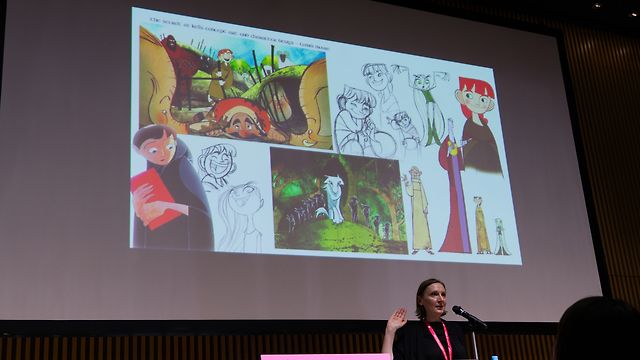
It also would have been impossible alone: one noted point during Twomey’s Niigata talk discussed the early days of production on The Secret of Kells, and with that, the difficulties in finding the studio’s ‘style’ while creating something that partners in different studios around the world would be able to emulate and assist them with bringing the project to life.
“Because myself, Tomm and Paul were always the ones signing the check at the end of the month, you couldn’t protect your director, so we had a huge sense of reality about what was possible and what was impossible,” notes Twomey. “Some directors feel, especially in animation, that their job is to keep pushing and pushing artistically until they hit perfection, and we’ve never really felt that at Cartoon Saloon.”
Particularly in independent animation, a project is very rarely the work of a single studio. Animation is such a labor-intensive art form, one with the ability to craft an entire world in the creator’s image and saddled with the difficulties of rendering each frame in order to do so, that it often requires the talents of hundreds to make a reality.
“We would sit down and think about what we could do that looks as unique and beautiful as we can make it, within the restrictions of our budget and the schedule we have,” recalls Twomey. “How can we communicate the design sensibility [of our project] knowing that we’re going to be shipping paper to Brazil or Hungary, where we don’t share a first language with the artists working on the project? How do we make our design strong enough to withstand all of the miscommunication that can happen on an animated film?”
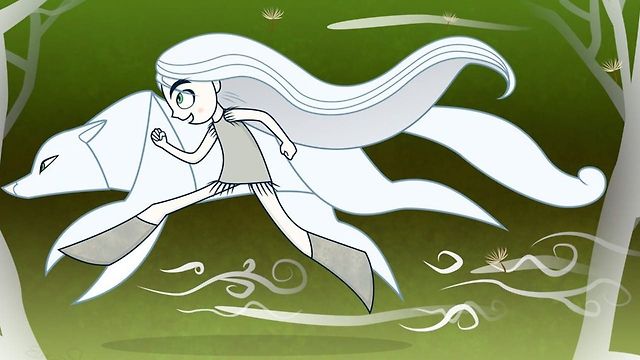
Delegation is a necessity, and it inevitably complicates the challenges of film production down to its granular design, or else a film merely isn’t made. “That’s what pushed us to make the designs as solid and simple as we possibly could,” says Twomey. “We looked at anime films like The Little Prince and the Eight-Headed Dragon that helped us to understand how we could simplify down our design and therefore make our stories deeper and stronger.”
She continues, “I also think that the more you go for realism, the less audiences can identify with characters. The more blank spaces you leave, audiences will naturally push forward and find spaces to fill in parts of their own lives in the blanks. Whether that’s with design, sound design, whatever elements are at your disposal, that’s what we’re looking for. I’ve seen directors reach for perfection and burn out their crew, or reach for perfection and have gorgeous sequences, but have the film overall not work because you’ve run out of time or money, so I’m kind of grateful we weren’t able to shield ourselves much from reality.”
This spirit of collaboration spreads to their approach to storytelling. One constant throughout Cartoon Saloon’s oeuvre is a collective desire to embrace and share cultures that audiences—or even its creators—may initially be unfamiliar with. “Some of the voice cast shared their parents’ experiences of different eras of conflict in Afghanistan, and how they managed to work their way through things, like how people didn’t always communicate things with words,” explains Twomey of The Breadwinner’s production.
“That informed the type of story we were telling, and we already had a great source material with Deborah Ellis’s original book, where she’s also an amazing listener,” she continues. “Afghan animators, by virtue of the fact that if they depict the human form at all, can be going against some rules in the eyes of religious extremists… so it’s a tremendous opportunity for us to tell stories that might not be told in quite the same way somewhere else. I think that’s what we’re really looking to do: if we have an amplification tool with our ability to animate and work with screenwriters and people from all over the world, we have to use it. Not to copy what the big studios are doing—it’s not why we got into animation in the first place. It’s the idea that we could tell a different story, and that’s what continues to excite us about the medium.”
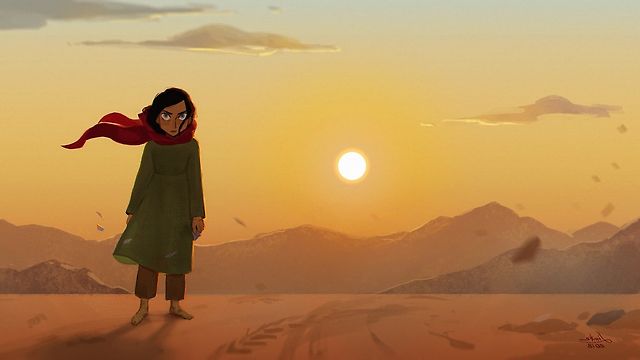
Yet in the age of A.I. and the uncertainty facing animation, does the ability to enact these principles suffer as a result? After all, Cartoon Saloon has worked regularly with streaming service behemoths like Netflix (home to Twomey’s My Father’s Dragon) and Apple TV+ (Wolfwalkers), both of which recently cut external licensing investment in animation studios.
A.I., especially modern video generators like Sora, are being built on datasets often taken from artists and creators without permission, carrying the risk of upending the industry further. Never mind the difficulties for new animators and the next generation to find the entry points people like Twomey were so readily able to take advantage of.
“The animation industry… there’s always been booms and busts,” ponders Twomey after some thought. “As William Goldman says, nobody really knows anything, and certainly nobody knows how long something is going to last or what the actual effect of A.I. is going to be on the industry. The trick for storytellers, filmmakers, producers, animators, is to just try and survive through that. For us, the old model of co-production is the one where there’s a huge ecosystem, with governments around the world having tax breaks to incentivize animation production in their country. These are all systems that would die away if everything was just bought off by large companies, so in a way, the challenge [of the current climate] has brought us back to the very basics of indie co-production,” she surmises.
“I don’t know what anybody’s five-year business plan looks like in film or animation. At the end of the day, we’re still just a bunch of students who like sitting on the grass and showing each other pictures and drawings that we have, what our influences are, what we want to do in the future. That’s what keeps us going and drives us forward.”
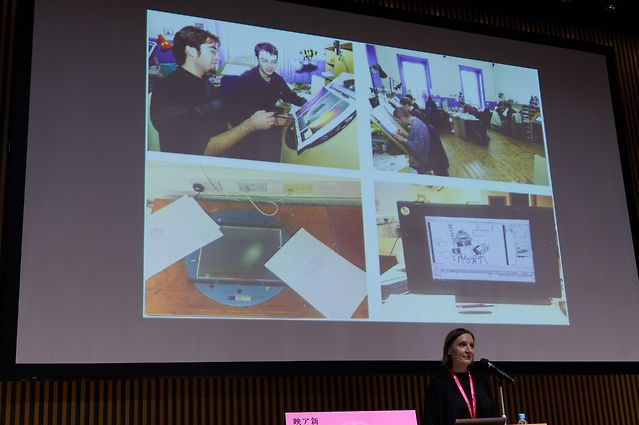
There is certainly work to look forward to in Cartoon Saloon’s future. A new film from Louise Bagnall called Julián is coming soon, plus more from Twomey and the talented pool of animators at the studio, all seeking to evolve and push their craft.
But what is animation to Nora Twomey? “That’s an interesting question,” she tells me. “You see superhero films that are 90 percent animation, where animation and special-effects teams are working away and most of what you see on screen is their work, but they’re considered live-action. You have rotoscoping that’s considered animation even though it’s not being translated through the experience of the animator; it’s being mimicked with brushstrokes.”
“It’s funny,” she admits, “because I felt I had such imposter syndrome getting into college in the first place because at the time I didn’t really know anything. I was sure I was going to be found out and kicked out of their college course because I wasn’t sure how not to mention things like squash and stretch and arcs, these principles of animation. More than 25 years later, I’m still here, saying I don’t know what animation is.”




